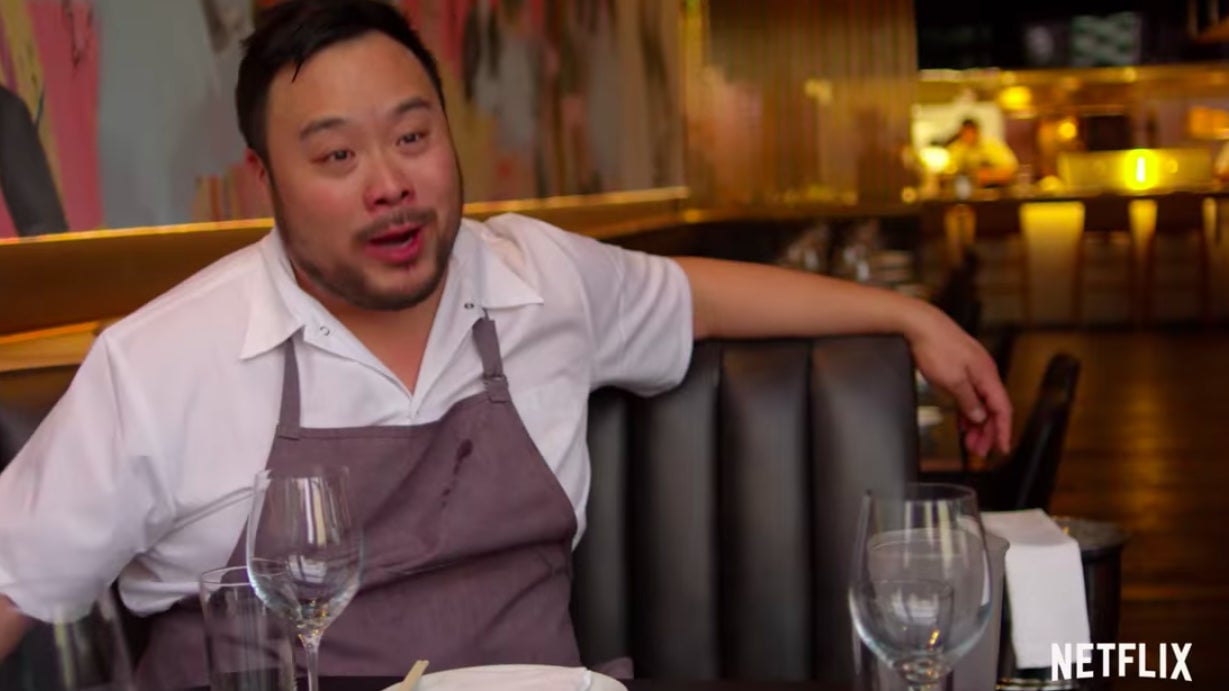David Chang expects chefs to suffer for their art
When David Chang was growing up in the suburbs in Virginia, kids made fun of the way his family ate. Friends who visited the Chang residence and caught a whiff of his mother’s kimchi would joke about the smell in school the next day. This, more than the renowned chef’s classic French culinary training, more than the success of his Momofuku restaurants, seems to be the single most important factor that defines Chang’s outlook.


When David Chang was growing up in the suburbs in Virginia, kids made fun of the way his family ate. Friends who visited the Chang residence and caught a whiff of his mother’s kimchi would joke about the smell in school the next day. This, more than the renowned chef’s classic French culinary training, more than the success of his Momofuku restaurants, seems to be the single most important factor that defines Chang’s outlook.
“I see a lot of white guys making Korean food and I’ll be honest, it pisses the shit out of me,” he says in his new Netflix documentary series, Ugly Delicious. “It’s everywhere now, kimchi this, kimchi that. You weren’t like, ostracized in elementary school because everyone thought when they visited your house that it smelled like garbage, they didn’t have to endure emotional hardship. And now it’s cool.”
While the tortured genius trope has become a cliché in art, music and writing, it serves Chang well on the show. For him there is no question that food can be great, difficult, challenging art, and worthy of the same sort of agony and critical appraisal. His Netflix show grapples with questions of authenticity, identity, and who has a right to cook what. And Chang expands the conversation around food by talking about chefs the way literary critics talk about authors.
Food media beyond the realm of restaurant reviews has long been stuck in a place that depends either on process (cooking shows and recipes), or on history and context (the story of a dish or an ingredient). Some very good personal essays and a vigorous body of reporting on the intersection of environment, agriculture, health and politics have also emerged from the newish American obsession with food. And outlets such as Food is the New Rock and Taste have placed food on the wider cultural continuum, alongside music and in conversation with a formal tradition.
Just as Pauline Kael changed the way we talk about movies, demonstrating that art made for commercial purposes can still be culturally significant, Chang constructs his own critical theory of food. He explores the intentions and influences that inform chefs’ food—not simply from an ethnic standpoint, but from an experiential one, too. He wants to know what themes other chefs are obsessed with and what common questions and preoccupations arise when you compare different food cultures.
“I feel like by bringing Taco Bell in here, it’s like having three Lester Bangs talk about Led Zeppelin,” Chang says in a segment in which he, Peter Meehan, his regular collaborator; Jonathan Gold, a food writer for the L.A. Times, and Gustavo Arellano, a journalist who has written extensively about Mexican food, drive around Los Angeles eating tacos.
Though the comparison to the legendary American music journalist may be a stretch, the cultural criticism of music went through similar growing pains to food media, in the 1960s and 1970s. “I remember how dramatic—and inspiring—it seemed in the Seventies when John Rockwell and Robert Palmer began writing seriously about punk in the New York Times,” Anthony DeCurtis, a long-time Rolling Stone editor and English professor at the University of Pennsylvania, wrote in an email.
Chang and his band of bros aren’t perhaps on the bleeding edge of culture in the same way that Robert Palmer was in suggesting that Times readers explore the Bowery’s music scene in 1977, but he mounts a convincing defense against the argument that food isn’t worth the same intellectual energy as art.
In declaring the idea of authenticity his enemy, which he does many times throughout Ugly Delicious, Chang recalls Harold Bloom’s influencer theory. Bloom, a professor of English at Yale and one of the most prolific literary critics of the twentieth century, has suggested that for the poet, what starts as a love affair with the body of work that pre-exists one’s own work, inevitably changes into an antagonistic relationship. That to truly create something new, it’s necessary to “misread” the work that comes before, and make your own correction, to move art forward and create a distinct voice.
What else is Chang doing in the kitchen when he uses instant ramen to make the classic Italian dish cacio e pepe? When as a Korean-American he opens a noodle bar with a Japanese name and his riffs on dishes from around Asia on the menu?
There are plenty of criticisms to make of Ugly Delicious. Chang intentionally models for readers the obnoxious “badgering” of waiters for the “secret menu” in a Chinese-American restaurant at one point. He cops to being a snob while hating snobs. Too many of its nonsense bits must have seemed funny on paper, but are just annoying to the viewer.
Like any cultural critic, Chang really needed a stronger editor to push him and ask harder questions. If he’s going to charge chefs with the task of suffering for their art, earning the right to reject authenticity, then he should be up to the equally painful process of realizing that not all of his ideas are good ones. He’s just lucky that so many of them are.